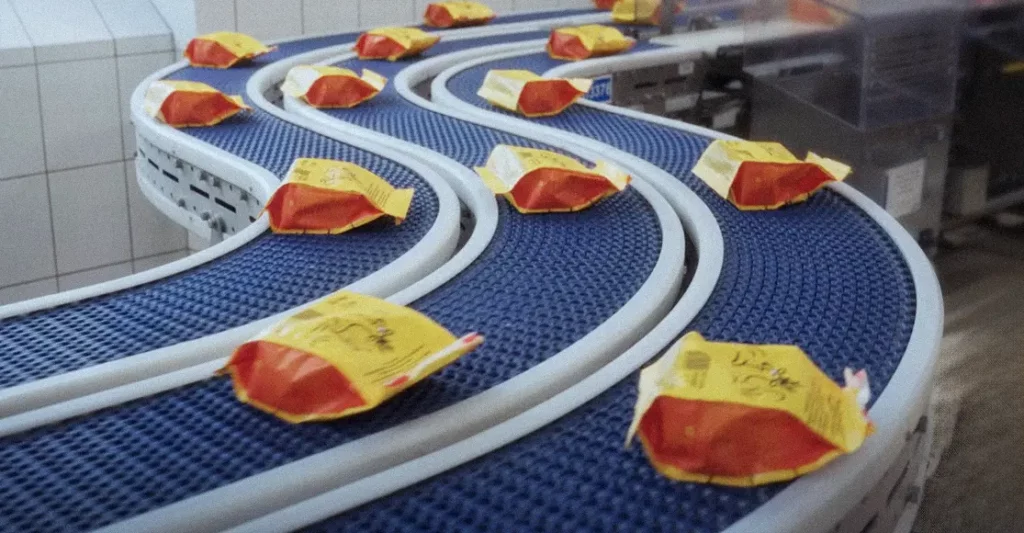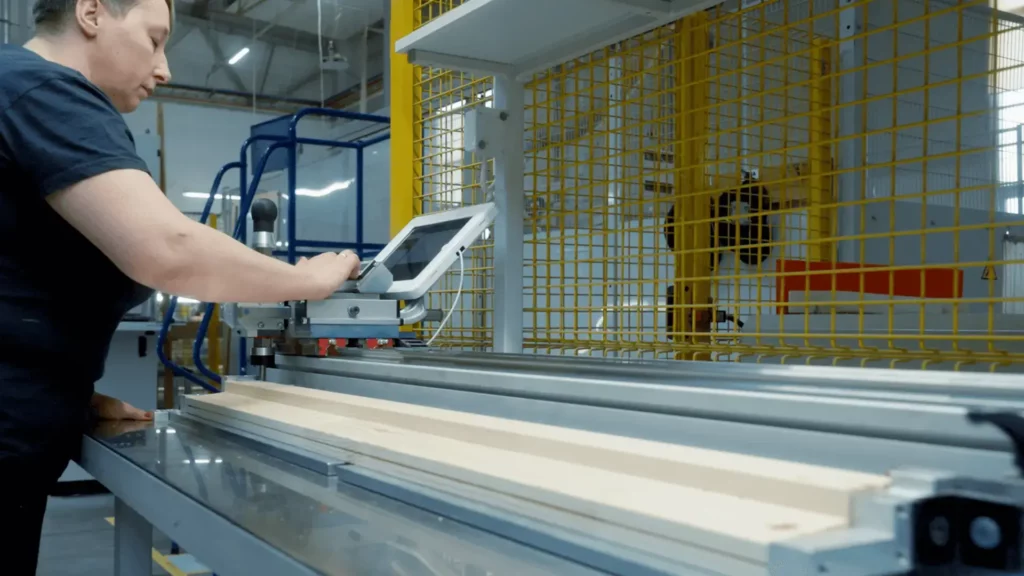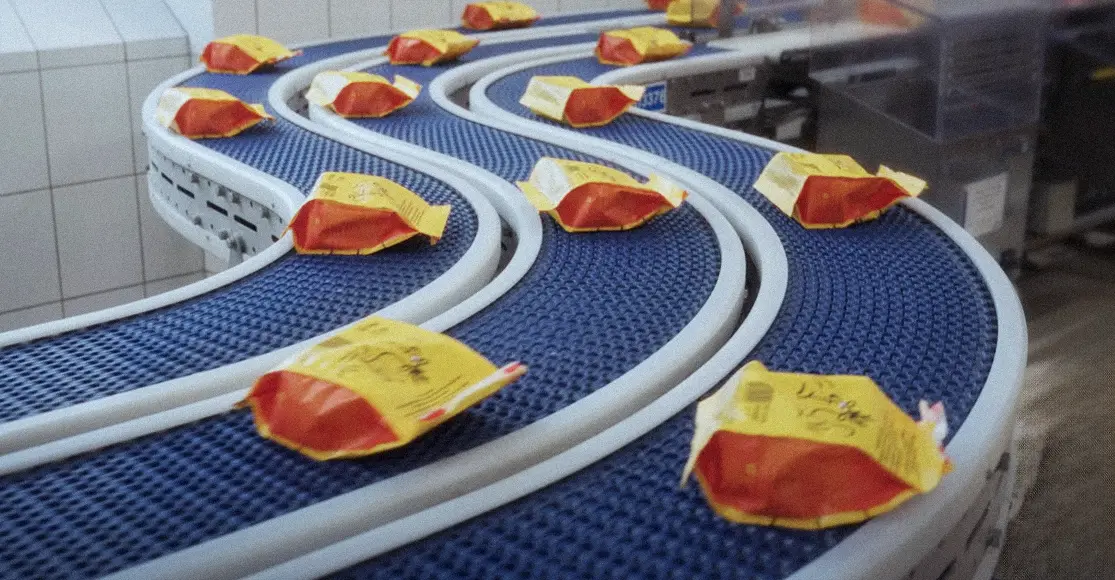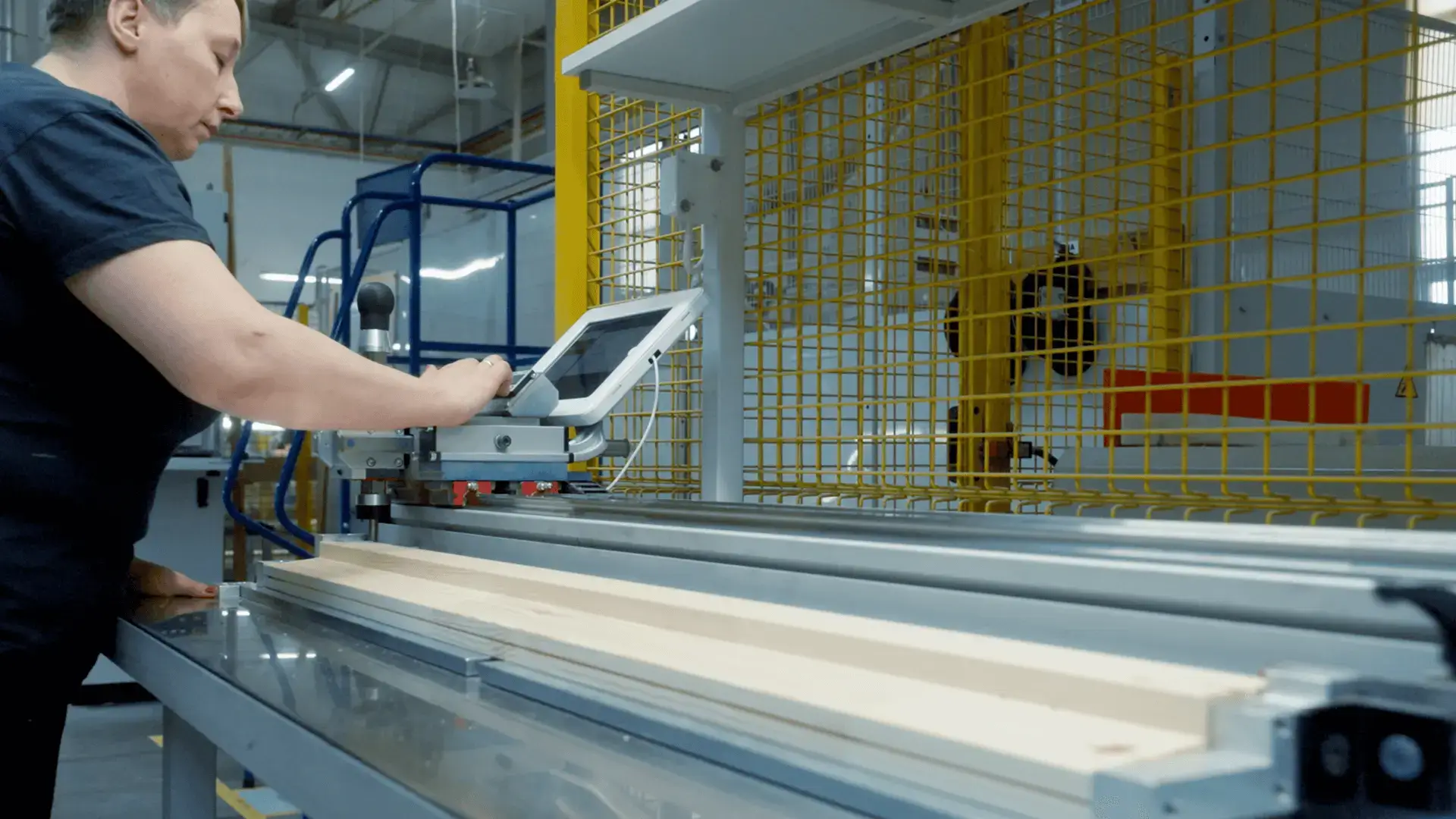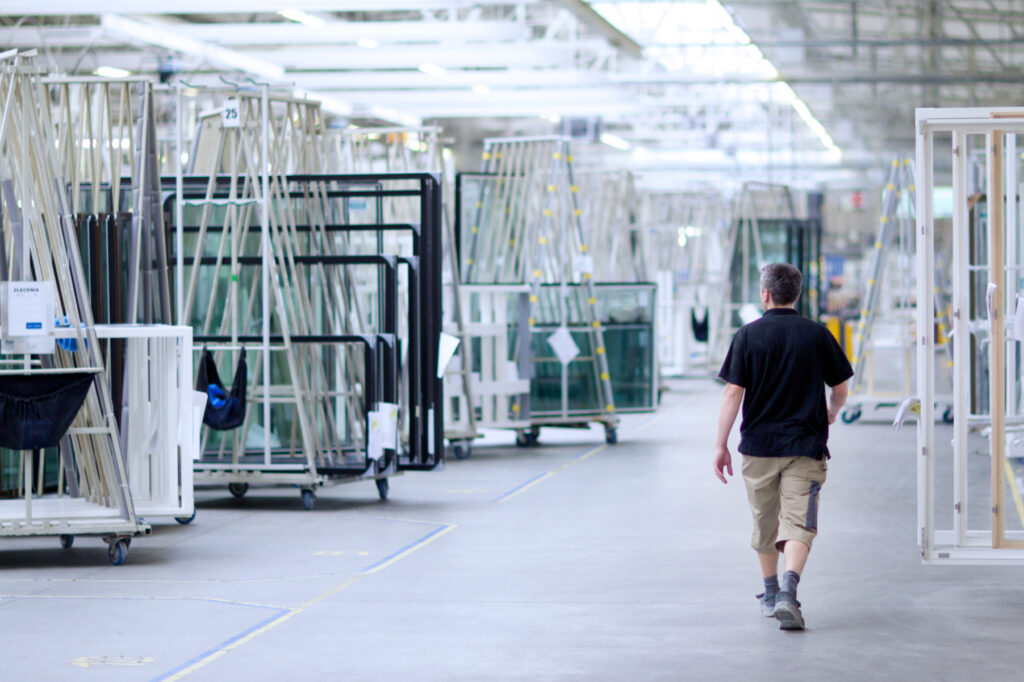
Challenges, Successes, and… Lessons. Digital Transformation in DOVISTA Poland in Retrospect
After a successful implementation of new technologies and digitalization of manufacturing processes, the “Windows Village” in Wędkowy, Pomerania, became a model facility. Looking back at the process after several years not only helps us understand what we succeeded in and what challenges we overcame, but it also offers a valuable opportunity to deepen our understanding of Digital Transformation, with all its benefits and challenges. Such insights are priceless for anyone who wants to continue growing. But before we dive into conclusions, let’s take a step back in time.
Implementing SAP between 2014 and 2016 was quite a challenge for DOVISTA, as it involved not only the Polish branch but also several other locations. Five dispersed systems were to be consolidated into one, but this wasn’t the greatest difficulty. The real challenge was transferring window configuration models. DOVISTA operates on a “make to order” basis, which means an infinite number of variations. Unlike the famous saying that “Any customer can have a car painted any color that he wants, so long as it’s black,” DOVISTA windows can truly come in any color. Also, while cars can’t be extended by 1 or 2 cm, windows can – if that’s what the customer desires.
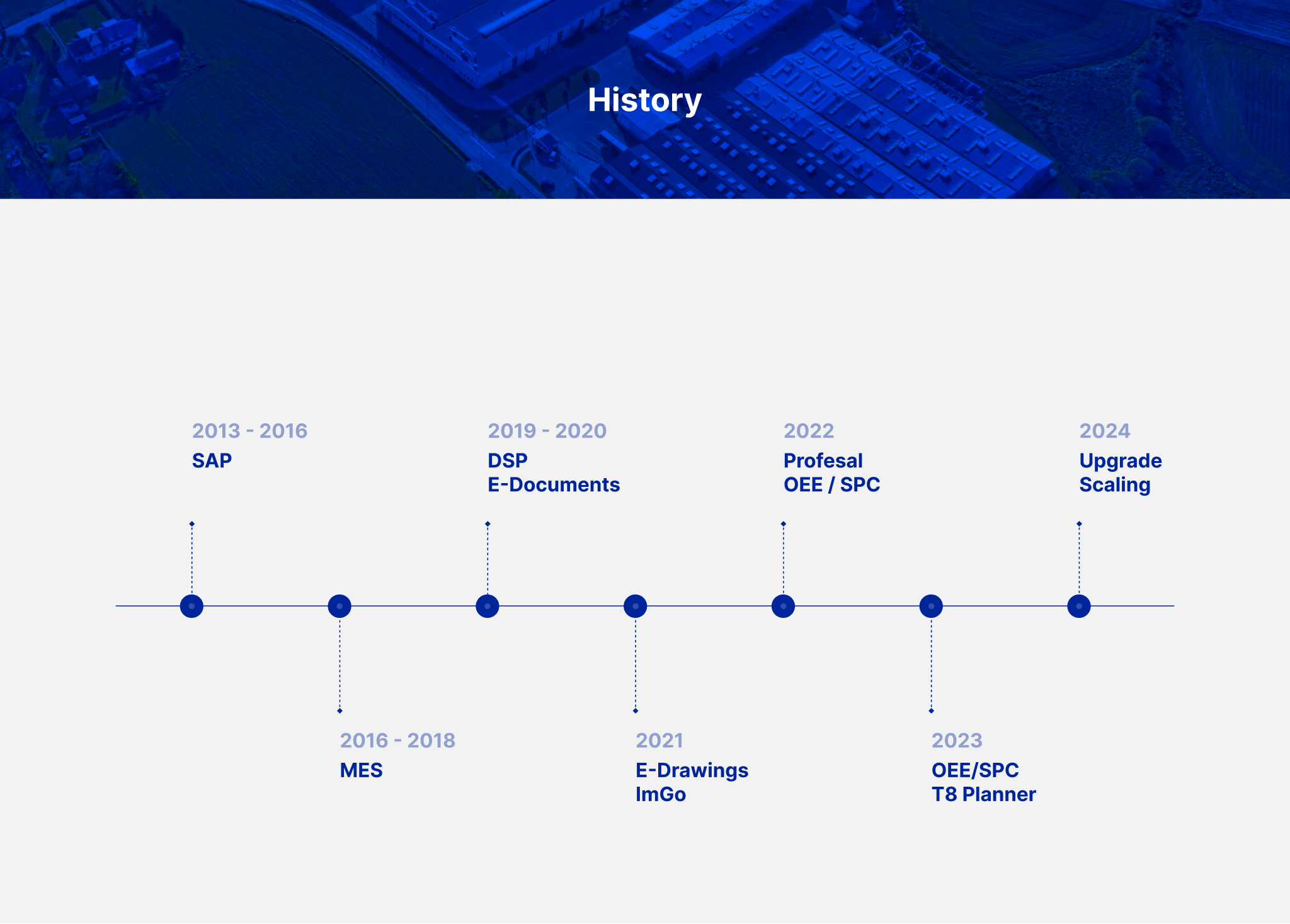
During this implementation, the first impulse to seek new solutions emerged. The ERP system had to communicate with machines, which meant translating data into a format they could understand. At the time, production relied on a variety of in-house systems developed by DOVISTA.
The idea was simple: replace the dispersed in-house systems with a single, more professional tool that could be independently configured but didn’t have to be built from scratch. Long-term support from the manufacturer was a vital aspect. And with that simple need, DOVISTA’s journey with ImFactory and AVEVA products began.
Today, the initial need that sparked the process accounts for only about 5-10% of what had been achieved with AVEVA tools. Over time, it became clear that many more functionalities could be utilized, leading to tangible benefits.
One of the first projects completed with AVEVA products was providing production staff with easy access to all the information they needed to perform their tasks. The standard SAP system couldn’t complete that task – it was too complex and only available in English at that time.
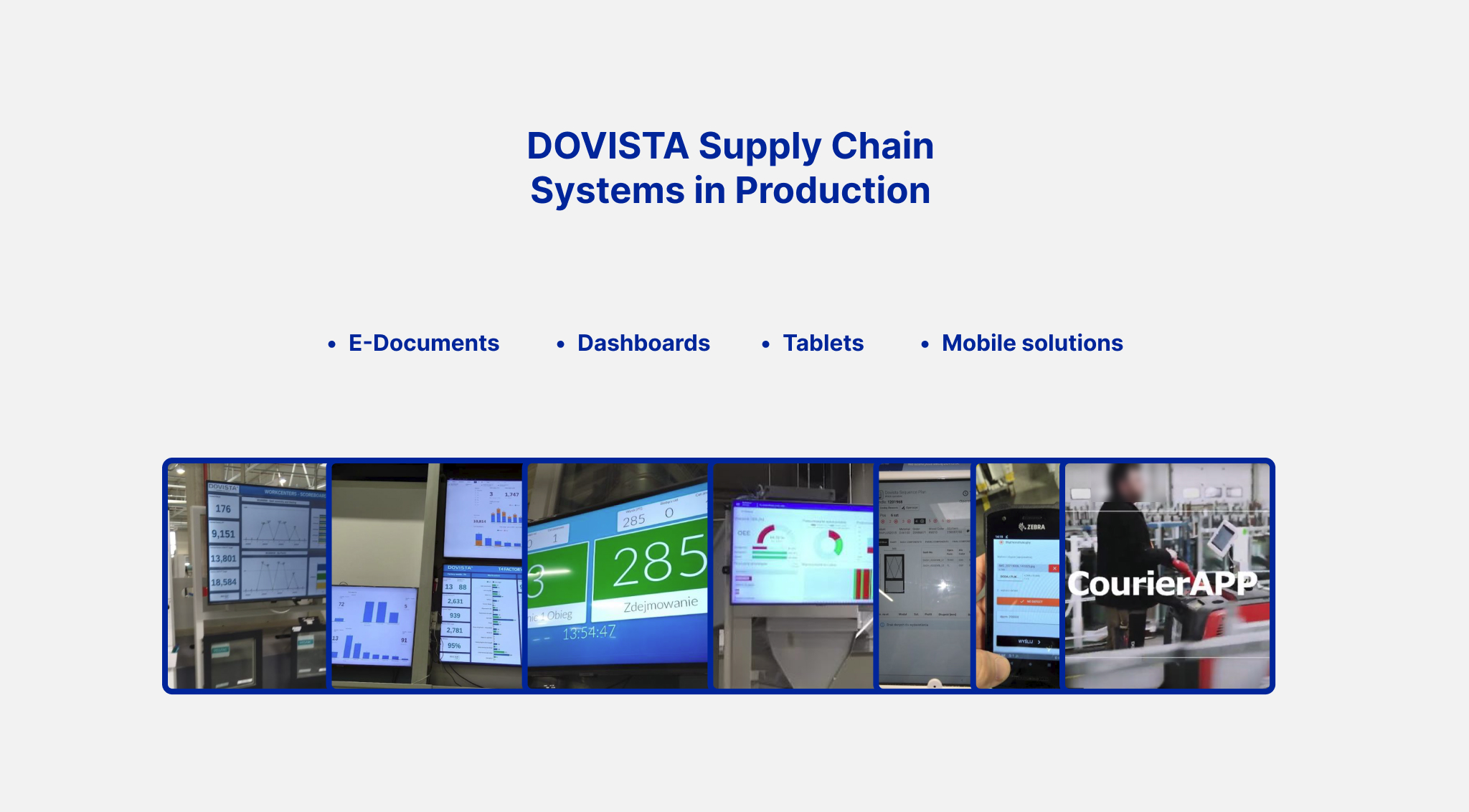
The process started with a simple queue of orders. Employees could view the necessary information to complete their tasks on a single device. Over time, this solution expanded to the areas of quality control and forms for collecting product data. All product-related information was collected in one place, including time and place of production, planned completion time, features, etc. All of this data became digitized with tools built on the AVEVA MES platform.
“Just as with MES, when we started using the second tool – AVEVA Enterprise Integrator (the so-called Data Bus) – we gradually started to identify more possibilities than we had initially expected. Today, we aim to facilitate any exchange between the physical world of information – related to people operating machines, sensors, and environmental conditions – through the Data Bus,” notes Piotr Bielkiewicz, Senior IT Manager, BSCC SCM at DOVISTA.
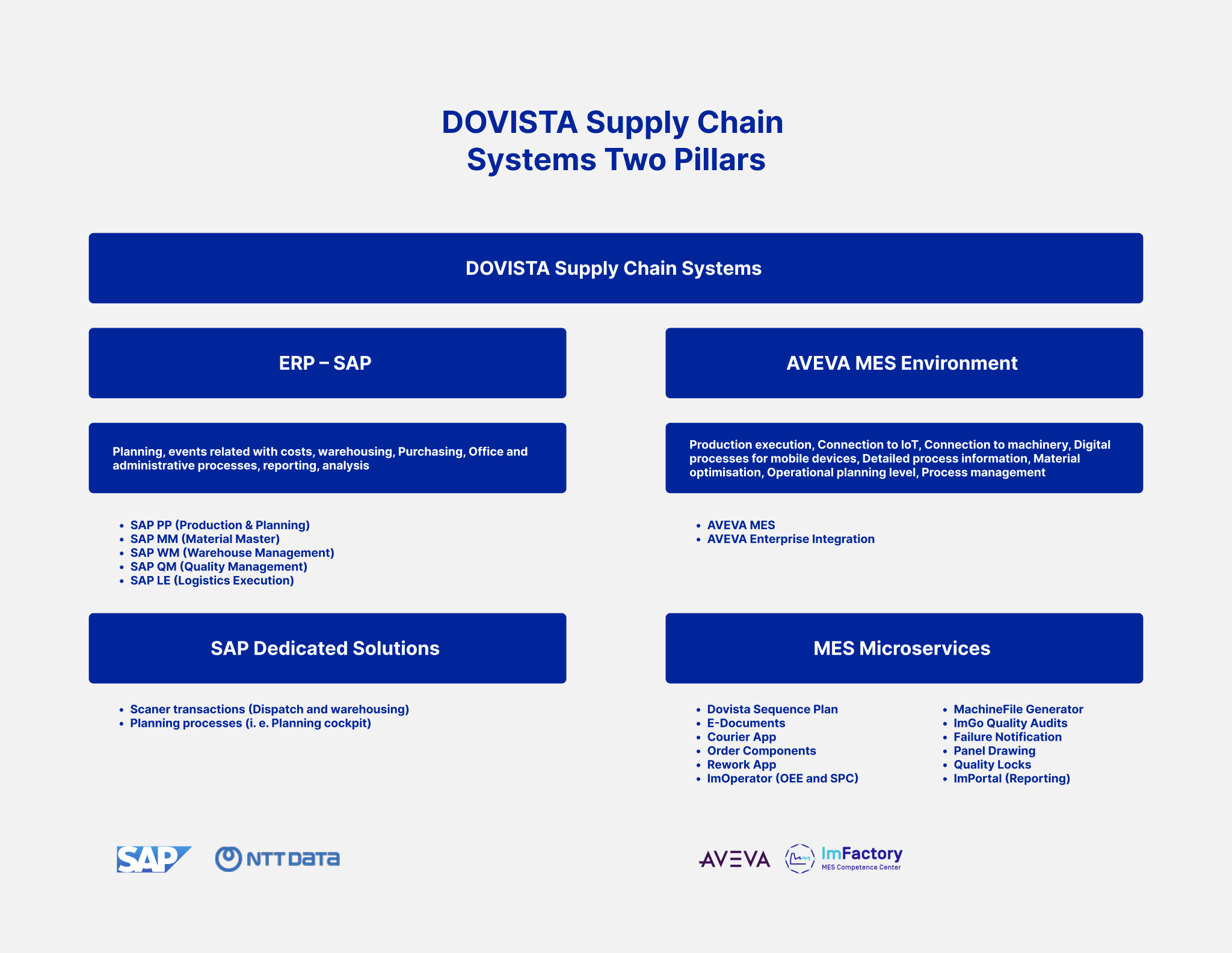

The main focus of DOVISTA’s transformation was not on tools, technologies, or systems. The most important goal was to ensure that people benefited from the changes. The aim of digitizing data, collecting it in one place, and making it easily accessible at any time was to simplify and streamline everyday work.

“There were, of course, concerns. Hardly anyone likes change, it’s just how we’re wired. We were aware that the innovations introduced could cause resistance. Many experienced employees work in our company, and we didn’t want to lose their trust. That’s why we decided to prepare accordingly – giving them not only time but also a voice and influence over the process of changes,” Piotr Bielkiewicz recalls.
These efforts paid off. There were certainly challenges along the way, as the production staff often painfully felt the transition to a completely different working environment. However, the benefits far outweighed the inconveniences.
“Two weeks after the changes were fully implemented, one of our employees said that he would never want to return to the old solutions,” he adds.
Streamlining the work on production also translated into benefits for customers. Today, they can feel the impact of these changes not only in terms of pricing but also through quicker responses to inquiries and real-time updates on where their products currently are.
The tools implemented years ago to address the company’s needs have now become an integral part of DOVISTA’s production environment. At the moment, IT systems are as indispensable as electricity, making operations impossible without them.
“MES and Enterprise Integrator are two primary tools that constitute the heart and the brain of our environment. Obviously, MES is the brain, containing the logic that we use, while the Enterprise Integrator provides the flow and exchange of data, just like heart pumping blood,” explains Piotr Bielkiewicz.
However, this wouldn’t be possible without additional, simple interfaces. A breakthrough for DOVISTA has been the introduction of E-Documents – an application customized for specific workstations that displays operator views. It continues to make a huge impression in DOVISTA’s factories. In essence, beyond the heart and brain, the user interface has become the face of DOVISTA’s production.
Now, the systems are present in Polish and Lithuanian locations. In 2016, there was no facility in Lithuania, but now, both locations are quite large, employing several hundred to over a thousand people each. The environment is being expanded within the DOVISTA Group, with plans of launching some functionalities in other DOVISTA Group’s facilities. The solution, developed to integrate AVEVA software with ERP for manufacturing management, has become the default for new and modernized plants.
Let’s bring up some numbers to illustrate the scale of the endeavor:
- Over 5,000 machine files are generated monthly.
- More than 350 tablets are used for displaying information.
- Over 200 various large-format displays are used to present production information.
- 1,200,000 messages are exchanged via Enterprise Integrator monthly.
- Over 170 machines are connected to the MES.
- 8 GB of data grows, and 1,500,000 MES jobs are created monthly [1].
[1] as of May 2024.
The E-Documents application, introduced during the transformation process, made the biggest impression and continues to do so today. It drastically reduced paper consumption, generating significant savings and elevating DOVISTA to the status of a “paperless factory”.
These weren’t the only benefits for the environment gained in the Digital Transformation process. Although others may not seem as spectacular, they are noteworthy. The improvements in efficiency, possible with the implemented solutions, have positively affected all other areas, including energy consumption and sensible management of materials.
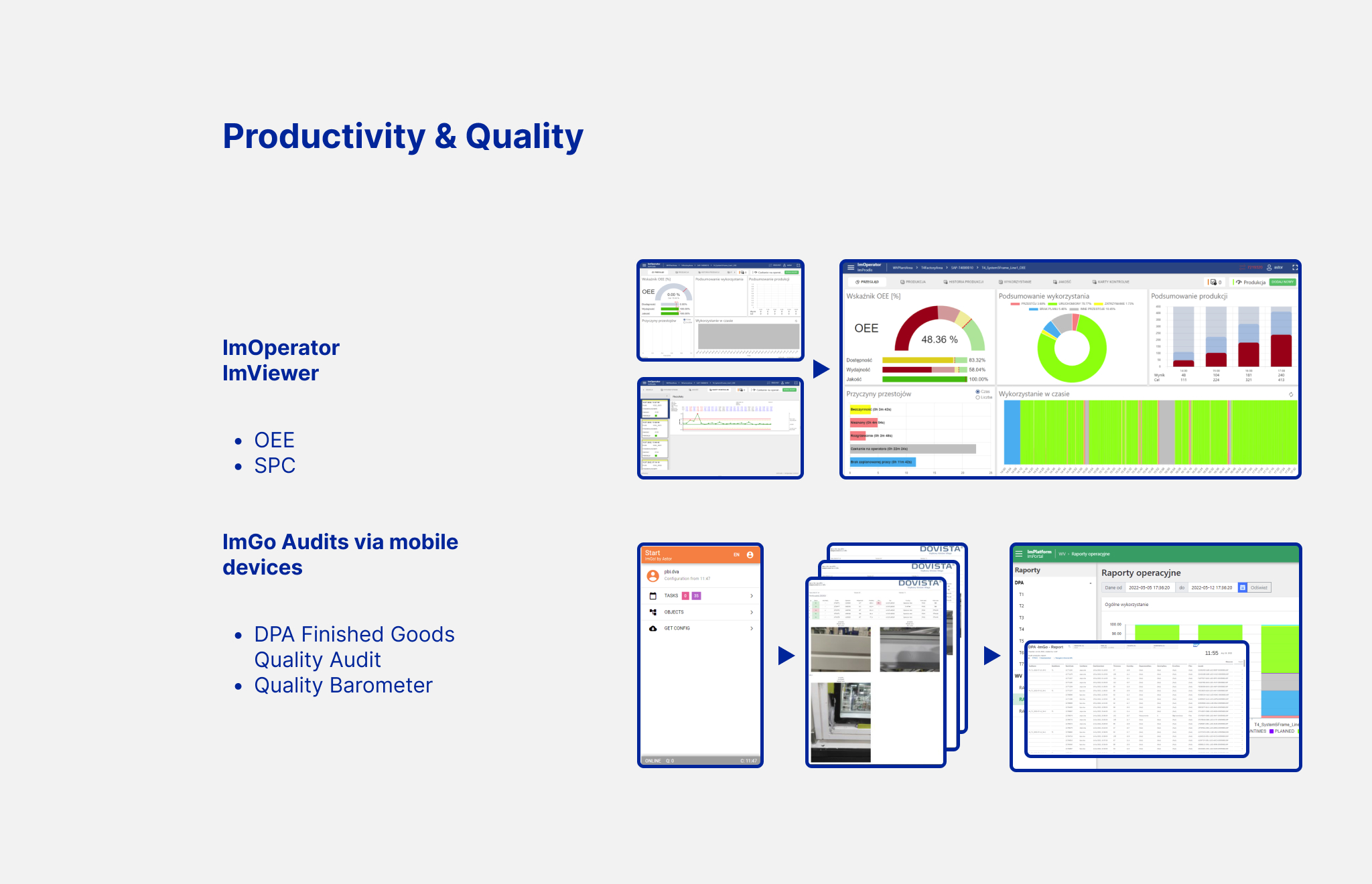
Today, the data collected by the systems helps optimize the consumption of paints and adjust the amount of ordered materials to the actual needs, effectively preventing waste. “Initial savings on materials are relatively simple and effective, but as you progress, you need more advanced technologies to take another small step further,” Piotr Bielkiewicz remarks.
“And we keep taking those small steps. ESG occupies a prominent place in our agenda in two dimensions: first, using the systems to optimize consumption; and second, collecting, presenting, and reporting data essential for this purpose,” he adds.
Piotr Bielkiewicz reflects on the greatest challenge that emerged during DOVISTA’s digital journey: “Throughout our Digital Transformation journey, we encountered numerous challenges – both big and small – but one of them kept coming up across all areas. It clearly shows that the key to successful transformation lies not in technology but in our mindset. For us humans, the most difficult thing is changing something we’ve grown accustomed to.
The simplifications brought by digitization completely change how the process is perceived. Often, even those implementing the changes can’t fully grasp the final outcome during the preparation phase. After such changes, processes have different principles, and human roles are redefined.”
The difficulty in imagining how the world will look after the change is the biggest and most universal challenge of Digital Transformation. It appears everywhere and affects all areas, relating to workforce shortages, projects taking longer than expected, or revisiting topics to rethink goals carefully.
“In over 20 years of digitalization projects, we have faced this issue almost daily. And repeatedly, we have thought that as experts in the field, we couldn’t be surprised anymore. Yet, the only constant is constant change. That’s why we’re always ready to support both the change and the people experiencing it. We prioritize flexibility, open-mindedness, and partnership, and this leads to collective success,” concludes Jacek Daukszewicz, Vice-President of ImFactory’s Board.
At the beginning of its transformation, DOVISTA didn’t focus on keeping up with software updates from providers. The company’s development environment was too dynamic, and individual elements of the system changed too rapidly.
”During the intense expansion of the system, particularly at the beginning of its existence, updates are often overlooked. Yet, they are crucial for ensuring continuity and stability. The focus is primarily on adding new features, streamlining the existing ones, and meeting business objectives, all while becoming increasingly dependent on the system. If an organization doesn’t realize this in time, it could get into serious trouble when product support ends or system updates become incompatible,” explains Michał Zielinski, Head of Product at ImFactory, who has supported DOVISTA’s projects for years.
However, time doesn’t stand still, needs and capabilities also evolve constantly. The system’s initial versions became outdated, and after massive development, DOVISTA’s environment grew dramatically, expanding multiple times within two years. This made it impossible to further delay the update.
The break between larger projects provided an opportunity to calmly approach the matter, updating AVEVA software to its latest version and reducing the technological debt across all related applications.
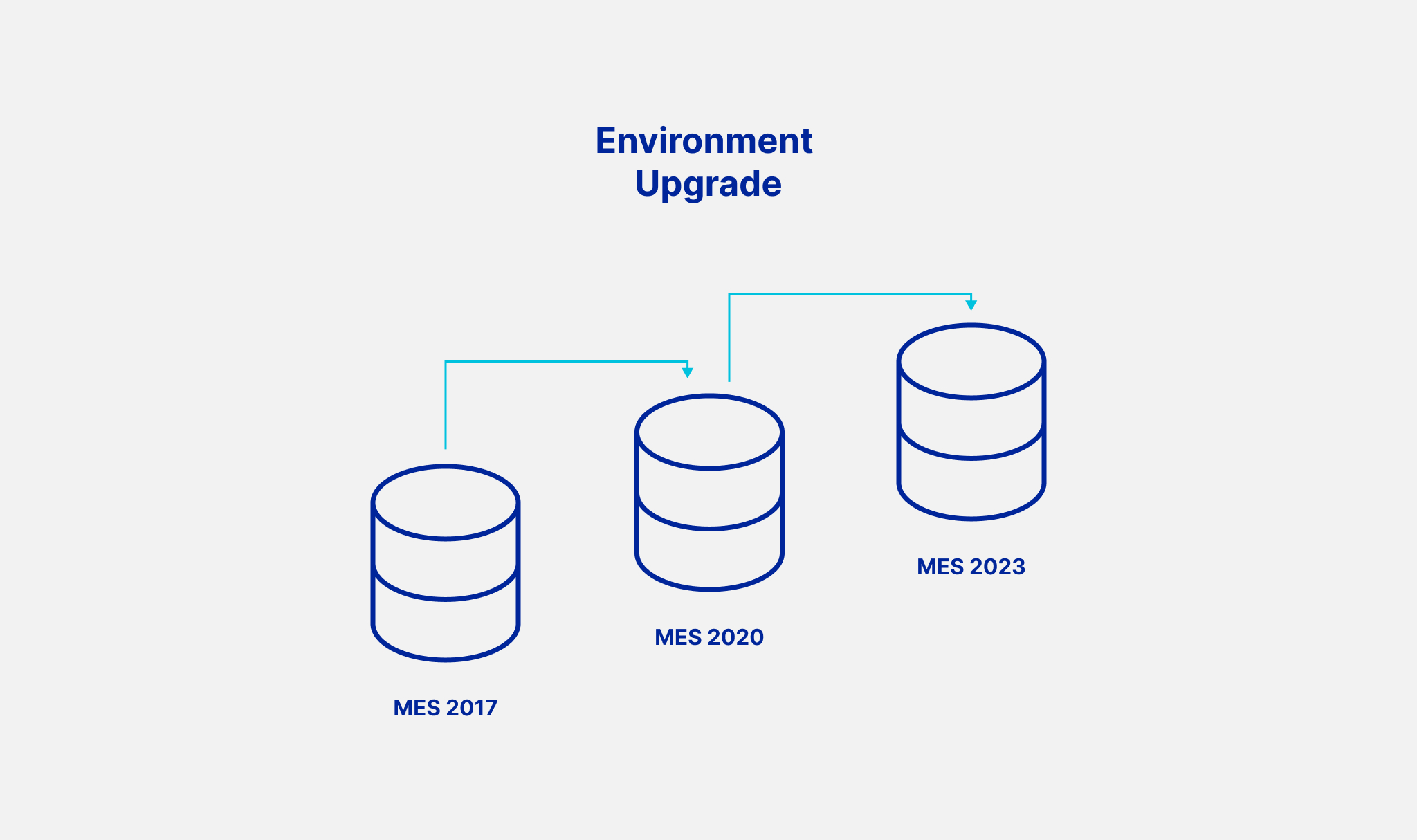
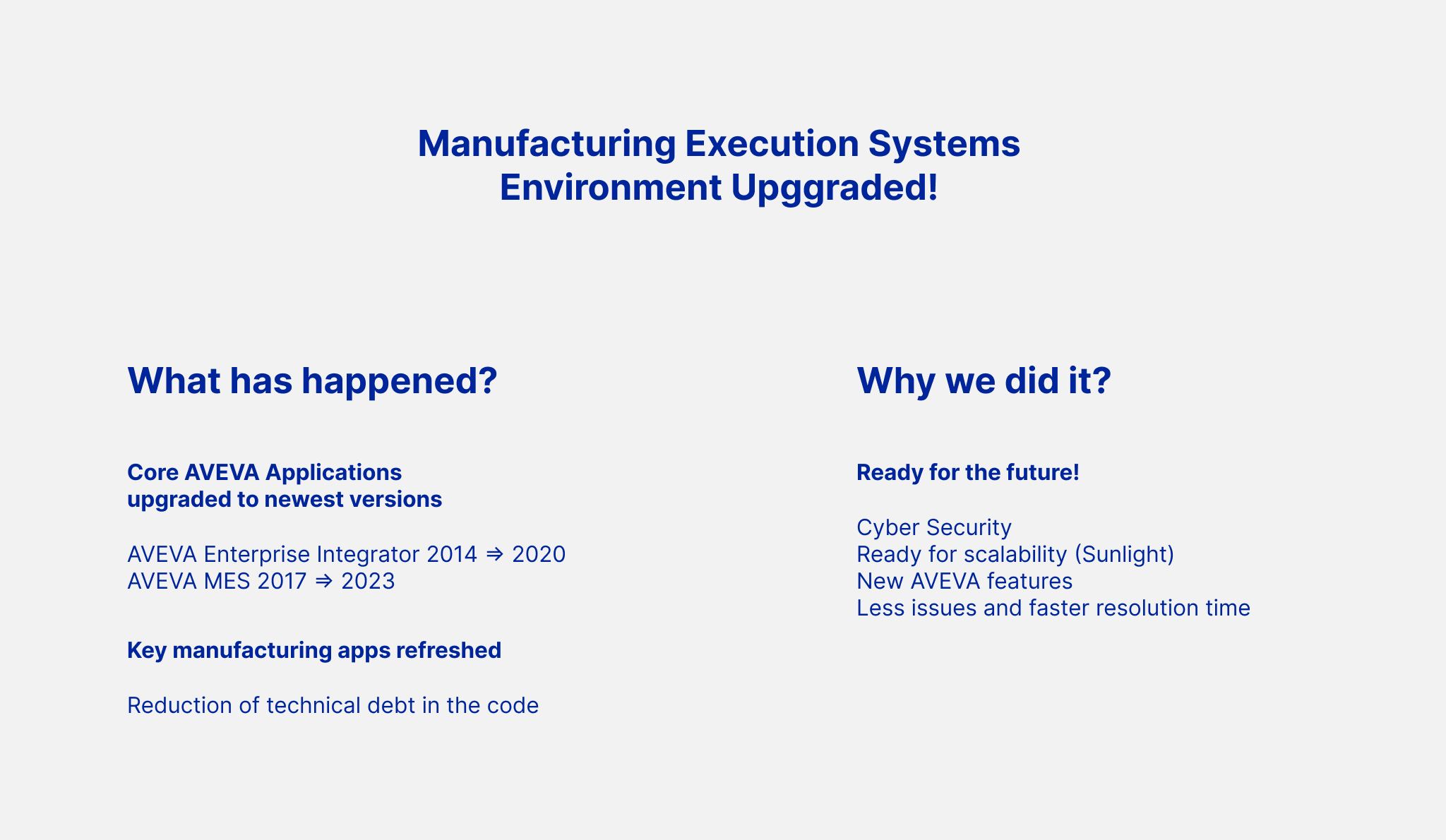
The project, initially envisioned as a two-stage update of certain system components, ended in re-writing multiple applications due to the demands of newer versions.
“We now strive to keep technological debt at a manageable level, updating software annually. We aim to apply a similar approach not only to AVEVA products – we’d also like to review our in-house solutions once a year, seeking potential to reduce the debt,” Piotr Bielkiewicz concludes.
“Today, we are armed with valuable experience. Our path has taught us a lot – at the beginning, we weren’t aware of many things. Now, looking back, we can reflect on what we’ve already implemented and continue improving it,” sums up Piotr Bielkiewicz. He shares the three most important lessons learned from the long transformation process.
First, before embarking on the project, it’s crucial to clearly define what you aim to achieve. And not just in terms of financial goals, as those are obvious. It’s essential to have a vision of what you want your factory and organization to look like after a certain period of time. This gives you a reference point as you begin the digital transformation journey.
The second important lesson is to act quickly and experiment as much as possible. It’s better to try different solutions, test them on a small scale, and discontinue what doesn’t work rather than overthinking every decision. This approach of delivering small results allows you to verify what works and what doesn’t.
The third and final lesson is that a strong team is the foundation of any successful transformation – whether it’s yours or your implementation partner’s – just like DOVISTA’s collaboration with ImFactory. Trust within the team is crucial for efficient operation without unnecessary bureaucracy, paperwork, or endless theoretical analyses.

While digitalizing all aspects of production was never DOVISTA’s goal, there is no denying that the process can become addictive. The more areas you successfully digitize, the larger the demand grows. For example, it started with production documents, but soon similar needs arose in other areas like quality control and business processes.
However, there are areas where technology can’t replace humans. While it can support decision-making, it cannot assume responsibility for those decisions. Also, wherever creative work is crucial, human involvement remains essential – the cost of artificially replicating human thinking and flexibility is simply too high.
“The growing popularity of AI solutions creates the illusion that soon humans will become redundant in many processes. The same fears arose during the automation and robotization boom. Yet, here we are, with people still needed in production, though now performing different tasks and roles. Digitalization allows us to work faster and more efficiently, sometimes even eliminating manual tasks. This, in turn, gives us time to focus on more demanding or complex issues, which elevates the importance of our work. We shouldn’t fear new technologies; on the contrary, we should seek new ways to leverage them,” adds Michał Zieliński from ImFactory.
Digital Transformation means ongoing growth and development, which, in fact, never ends. Piotr Bielkiewicz is fully aware of this and shares his vision for the future:
“We will continue the transformation at DOVISTA. We will certainly focus on data, which serves as the connection between the customer ordering a window and the employee manufacturing it. We want to view data as a material that flows between the two ends of this chain. That’s the direction our journey will take.
We will certainly encounter new and specific business needs along the way. On the horizon, we see goals like the Factory of the Future and engaging AI to support areas related to quality and environmental parameter analysis in connection with our products. But all these are our further steps.”
The article is based on an interview with Piotr Bielkiewicz, Senior IT Manager – BSCC SCM at DOVISTA.
See also
Want to learn more? Visit our Knowledge Base, where you'll find articles and webinars by experts to expand your knowledge.
Check if Digital Transformation is the Answer to Your Company's Needs



























